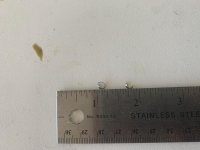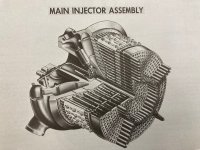I did a oil change today and found this metal in the oil screen. The engine now has about 42 hours on it and the metall is not ferrous, look to be brass but can't say for sure.
Any thoughts as what this could be?
Edit: when you look at the picture up close, one side is serrated and rather uniformly and the other side is smooth.
Any thoughts as what this could be?
Edit: when you look at the picture up close, one side is serrated and rather uniformly and the other side is smooth.
Attachments
Last edited:






